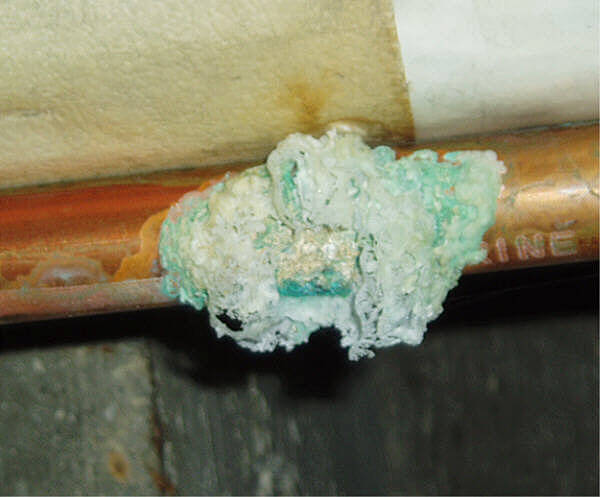One of the most common plumbing problems found by home inspectors is galvanic corrosion of the water pipes. “Galvanic” corrosion occurs between any two dissimilar metals in contact with each other and water and typically attacks the iron / steel pipe to a degree somewhat dependent upon existing corrosion conditions. Galvanic corrosion is defined as an electrochemical reaction of two dissimilar metals in the presence of an electrolyte, typically water and where a conductive path exists. This very small current flow causes the corrosion of the least corrosion-resistant (active) metal to increase and corrosion of the more corrosion-resistant (inactive) metal to decrease. Since current flow and dissimilar metals are involved, this form of corrosion is called galvanic, or two-metal corrosion. Corrosion progressively destroys the metal, causing weakness, which can lead to failure. One of the more effective methods of controlling corrosion is preventive, such as using dielectric couplings.
